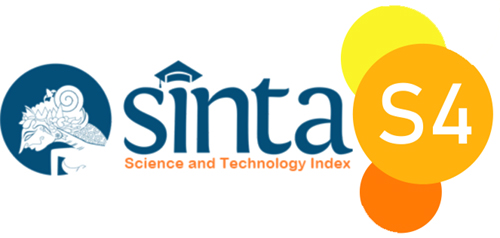Implementasi Metode Cluster Analysis K-Means dalam Segmentasi
 :
:
https://doi.org/10.32409/jikstik.22.3.3493
Keywords:
UMKM, K-Means, Clustering, KlasifikasiAbstract
UMKM smilax ointment is a business that sells goods in the form of ointments that are useful for the male reproductive organs. These MSMEs still use traditional business strategies and use computer technology only for database creation. Smilax ointment UMKM product is Smilax cream which consists of 3 packages, namely 100 grams, 80 grams, and 40 grams. The research was conducted using the UMKM database and the clustering method used was k-means clustering because K-means is non-hierarchical in accordance with the data obtained from UMKM. In addition, k-means is able to classify data very quickly compared to fuzzy k- means[1]. This research includes the stages of data collection, preprocessing, analysis process (k-means), evaluation, and conclusions. The results of the clustering classification which was carried out four times based on the type of packaging, obtained a value of k = 2 where the cluster "0" is the unproductive region/city and cluster "1" is the most productive region/city, namely Jakarta and Jayapura both for the 100 gram, 80 gram, packaging type. and 40grams.Downloads
References
Lathifaturrahmah, “Perbandingan Penggerombolan K-Means, Fuzzy K-Means dan Two Strep Clustering,” Angew. Chemie Int. Ed., vol. 2, no. 1, pp. 39–62, 2014.
G. G. Dodi Alexsander Manalu, “Implementasi Metode Data Mining K-Means Clustering Terhadap Data Pembayaran Transaksi Menggunakan Bahasa Pemrograman Python Pada Cv Digital Dimensi,” Infotech J. Technol. Inf., vol. 8, no. 1, pp. 55–62, 2022.
A. S. Ilmananda and H. D. Ranglalin, “Klasterisasi Negara Pengekspor Beras ke Indonesia Menggunakan Algoritma K-Means Clustering Clusterization of Indonesia ’ s Rice Exporting Countries Using K-Means Clustering Algorithm,” vol. 13, no. 2, pp. 139–150, 2023.
I. S. Mangku Negara, P. Purwono, and I. A. Ashari, “Analisa Cluster Data Transaksi Penjualan Minimarket Selama Pandemi Covid-19 dengan Algoritma K-means,” in JOINTECS (Journal of Information Technology and Computer Science), 2021, vol. 6, no. 3, p. 153, doi: 10.31328/jointecs.v6i3.2693.
M. G. Pradana, A. C. Nurcahyo, and P. H. Saputro, “Penerapan Metode K-Means Klustering untuk Menentukan Kepuasan Pelanggan K-Means Clustering Method to Determine Customer Satisfaction,” Citec J., vol. 7, no. 1, pp. 42–50, 2020.
R. R. Aria and S. Susilowati, “Classification of Generation By Population by Region in Indonesia Using K-Means Algorithm,” IJISTECH (International J. Inf. Syst. Technol., vol. 5, no. 4, p. 415, 2021, doi: 10.30645/ijistech.v5i4.160.
H. Nicodemus Turnip and H. Fahmi, “Penerapan Data Mining Pada Penjualan Kartu Paket Internet Yang Banyak Diminati Konsumen Dengan Metode K-Means,” JIKOMSI J. Ilmu Komput. dan Sist. Inf., vol. 4, no. 2, pp. 36–41, 2021.
A. Asroni, H. Fitri, and E. Prasetyo, “Penerapan Metode Clustering dengan Algoritma K-Means pada Pengelompokkan Data Calon Mahasiswa Baru di Universitas Muhammadiyah Yogyakarta (Studi Kasus: Fakultas Kedokteran dan Ilmu Kesehatan, dan Fakultas Ilmu Sosial dan Ilmu Politik),” Semesta Tek., vol. 21, no. 1, pp. 60–64, 2018, doi: 10.18196/st.211211.
M. R. Hasibuan and A. H. Muhammad, “Cluster Analysis for Performance Evaluation of Outsourcing Engineers in the Telecommunication Industry,” vol. 7, no. 158, pp. 30–40, 2023.
Kusnawi, “Evaluasi CLUSTER,” Uinversitas Amikom Jogjakarta.
Downloads
Published
How to Cite
Issue
Section
Categories
 Abstract View: 0 times
Abstract View: 0 times








